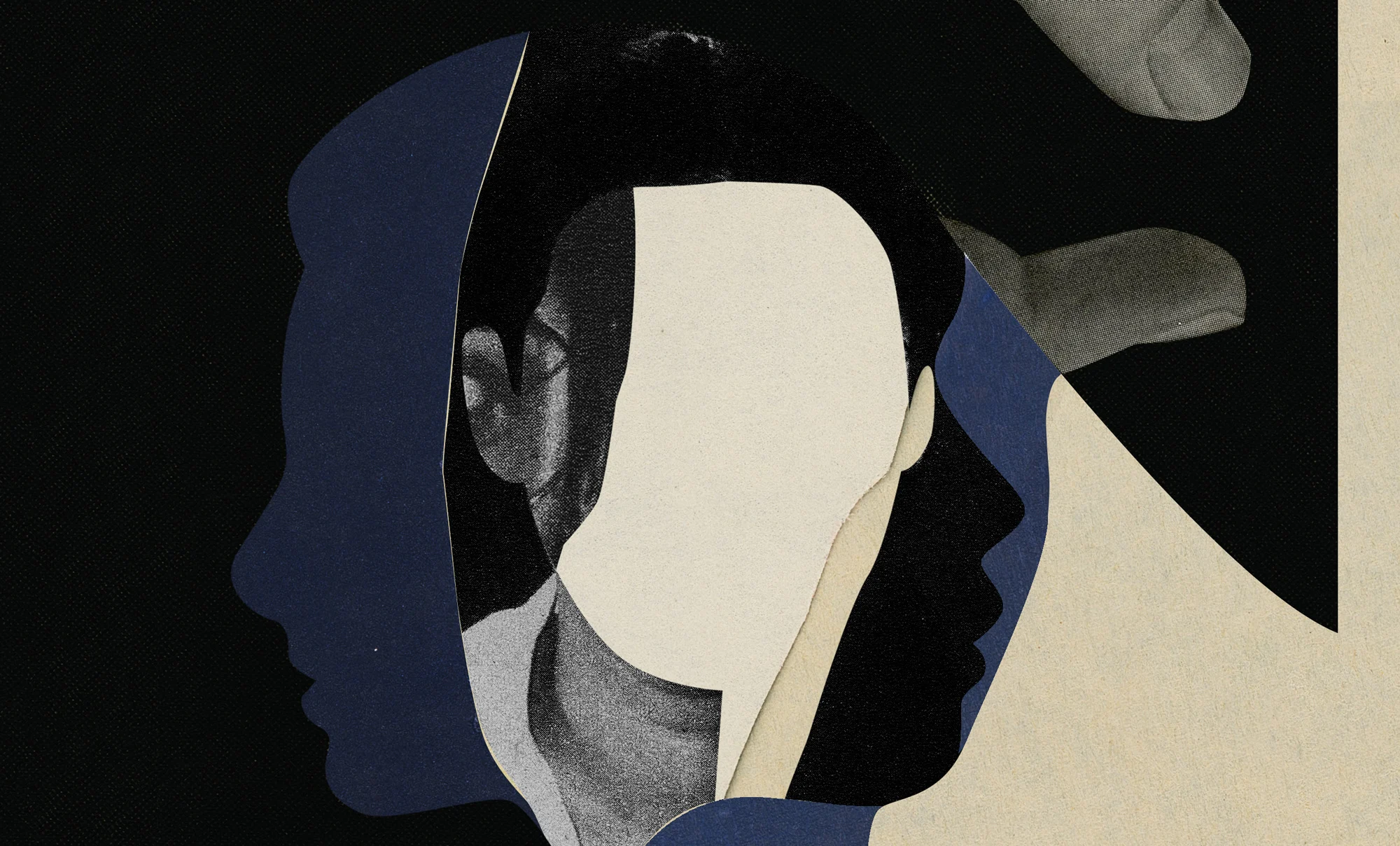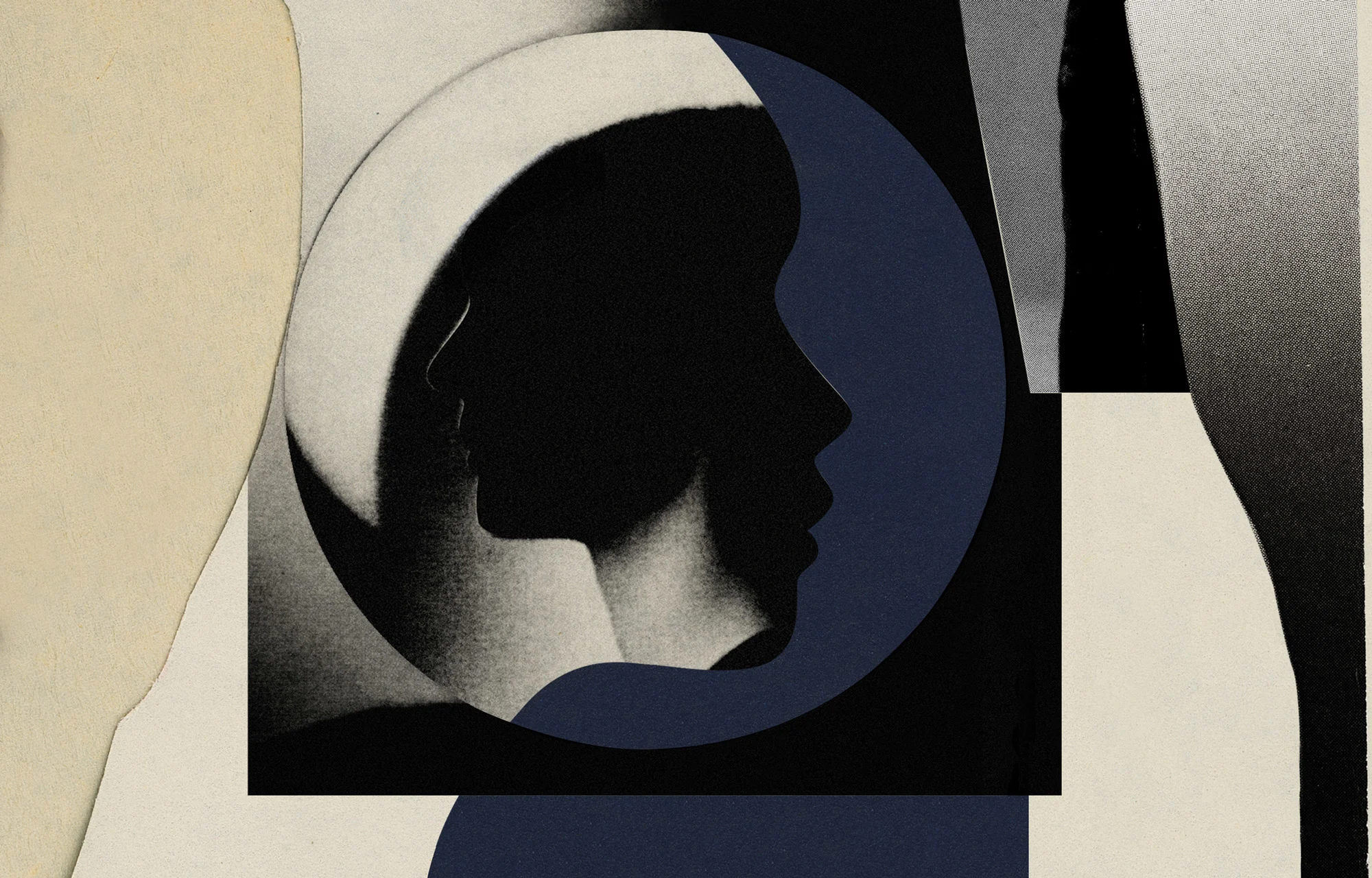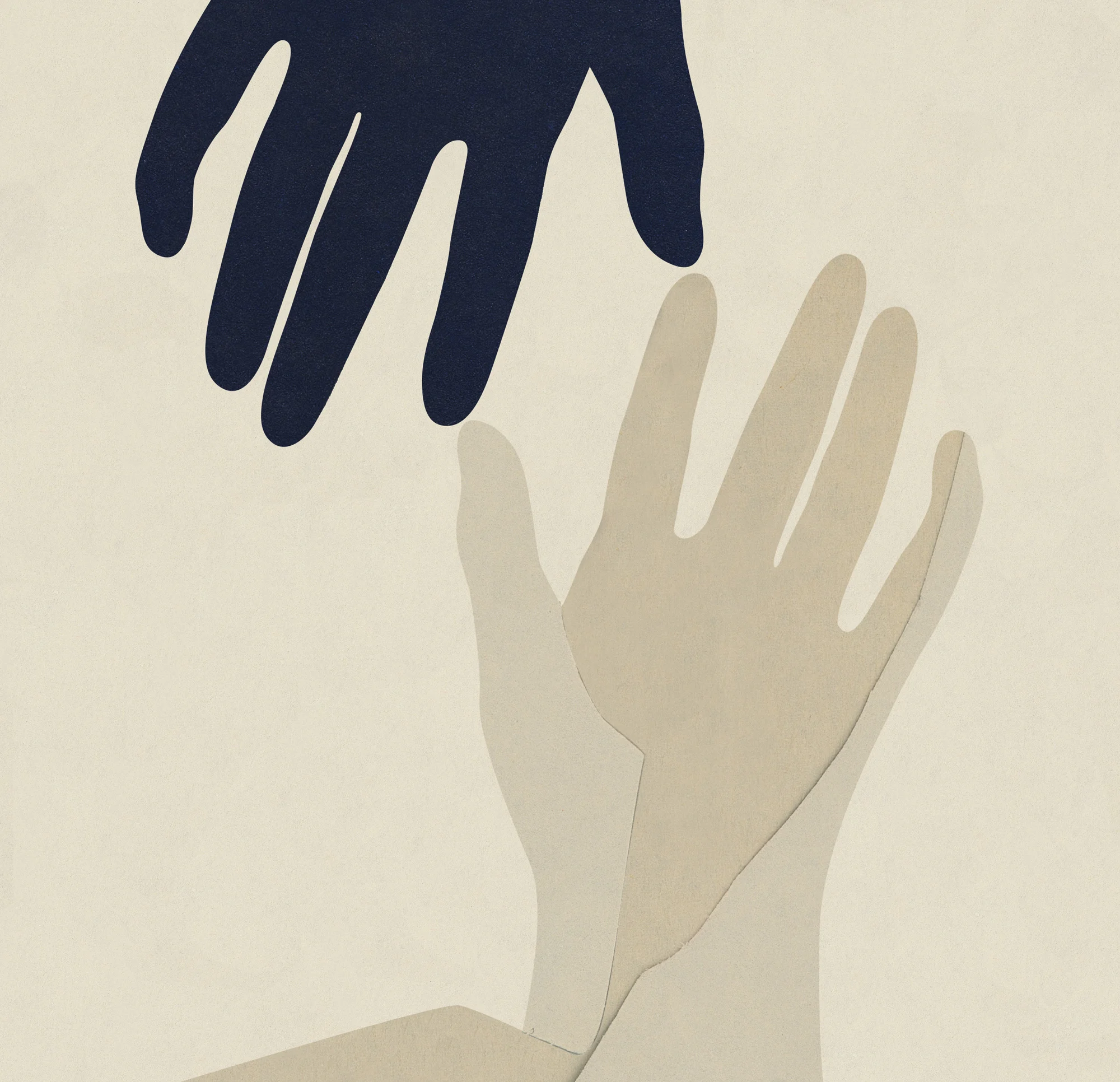

We all have personal routines. From skincare to childcare to how we work and manage relationships. These routines have been subconsciously honed over the years and become patterns that are at once comforting and difficult to break away from. Pandora Sykes, the author of How Do We Know We’re Doing it Right? explores the creative and personal benefits she found from consciously uncoupling from routine.
Collages by Vartika Sharma.
I have always been a stickler for routine. When I was five years old, I had to make my bed and switch the light switch on and off three times before leaving my bedroom in the morning. When I was a pre-teen, I would get changed back into my school uniform before bed and sleep in it, so that I could efficiently perform my entire morning routine – including the eating of breakfast – in seven minutes flat. At university, a time idealized for its flimsy embrace of routine, I developed a series of secret rules about how long I could sit in the library for, how many hours of sleep I permitted myself to have, and on which days I could ditch the literature and slope off to Primark. In the last few years, like many people juggling work and two small children, my routine became not so much boundaried as bordered. The rigidity meant that an unexpected visitor at the door would make my heart sink; an unscheduled phone call becoming something I had to atone for later. When I wearied of a certain sequence, or felt like it wasn’t reaping the magical effects that it cannot possibly reap, I would simply shuck it off and feast upon another.
Creating and maintaining a sequence of events arranged a world I frequently did not understand into something manageable.
The routines of my life have varied in flavor, but have all been governed by compulsive tendencies. Creating and maintaining a sequence of events arranged a world I frequently did not understand into something manageable. A routine offered comfort and protection. I have entertained more routines in my life than I have devoured boxsets, and deciding to start a new one is the best feeling of all. For a moment, I would feel God-like: Look at me, designing my life to work for me! When in fact, I was doing quite the opposite. I was working for my routines. I was spending more time worrying about the flow of events than I was about the events themselves. I call this “tickboxery” – where things are planned (and typically written down), if only to be slotted into and ticked off the list of life. I kept stuffing more and more things into my routines, so that the skin of them could barely contain the meat.
Having a tightly scheduled routine kept me safe. Kept me sane.
Until it didn’t.

For some, routine offers a freedom. For others, it can keep you tightly bound.
I began to consciously uncouple from a fixed routine towards the end of last summer, after a cycle of interviews to promote my new book. My book is about the anxieties, trivialities, myths and trends by which some (not all!) women may measure their lives. Unsurprisingly, the question arose: what would the book say about all this given that almost all of those anxieties, trivialities, myths and trends that I had written about were currently preserved in aspic due to the pandemic? I wondered if the book would troll the reader; presenting them with all the ways in which they might have lived their lives. Or, might it lend an opportunity to appraise or analyze the way we live our lives from a distance – to figure out how they may serve us better?
I needed to practice what I preached, and take stock of what I had learnt. I was in another bad patch of insomnia and struggling with my mental health after the birth of my son. My work involves spinning a bunch of different plates – usually ones from the same set of china, but nonetheless involving different people and organizations – and when one falls, there’s a knock-on effect. I would find myself apologizing not to one person, but to ten.
For some, routine offers a freedom. For others, it can keep you tightly bound, so that your experience of the world becomes contained within a series of steps. I began to feel like the protagonist robot of Kazuo Ishiguro’s new novel about an artificial friend named Klara who is only able to see the world in boxes. In my deepest self, I felt like it was time to let some plates break. To let my tightly wound routine go smash! and see what kind of kintsugi I could create with the broken pieces.

During times of great stress, routines are important. Health professionals advised us to maintain a routine in the pandemic and if we didn’t have one, to create one. But as others embraced routine, I jettisoned it. I stopped creating a back-to-back schedule where each hour was accounted for, and instead made a rough plan for the week. I stopped seeking to clear my inbox at the end of the working week. This un-scheduling applied not just to my professional life but my personal, too. I tended to leave catch-ups with friends I hadn’t seen for an entire year for the weekend, but with two children and an aversion to my phone on Sundays, it never worked. If there has been any kind of collective learning this year, it is surely this: why make the plans (or the routines), if only to worry about them?
My primary ambition was to stop looking ahead. I wanted to stop using routine as a way of living in the future, and instead embrace and confront the right now. Living in the future is a consolation – it promises hope and excitement, a chance to do things differently – but it is also a cop-out from the present. It allows you to avoid what is going on right in front of your eyes and, in work terms, to fast forward over the process. This began to feel dense: “the process,” mockable as the language is, is arguably the best bit of any creative project.
I decided to stop seeing the detours as detours. To look not to the finish line, but just a few steps ahead.
I decided to approach each day as its own singular thing, rather than the next one in a series. Previously, I had assigned certain days to certain activities (admin on Monday, meetings in the middle of the week) and kept my evenings studiously free, because I knew I was often tired. Paradoxically, the evenings are when I feel most creative. And so I began to allow my workday to bend and flex around my emotions – as much as you can when you have children – rather than the common idea of a workday. The freedom of freelancing has never been one I have comfortably embraced. I am organized, I like having older, wiser people working above me, I like having clear boundaries. And so in the absence of diktats, I had created my own. But what is freelancing, if not a way of finding freedom in the way you work? And so I took a back-to-the-drawing-board approach. On my current project, almost all of our interviews have taken place in the evenings. Rather than exhausting me, it galvanized me, leaving the meat of my day to the end, allowing me to forage and ferret my way through my day with research, rather than squaring up to another human first thing (which often meant I wouldn’t sleep the night before).
There were concrete things I could do (and did), but generally, I approached the throwing off of routine as more of a feeling than an act. I imagined my mind, and my day, as a balloon: not fixed, but free-floating. I should clarify now that I did not seek a wholesale rejection of routine in its entirety – that would never work with two small children who need to be washed and fed at roughly the same time each day – but rather, as the tech-wellness gurus call it, to disrupt my obsession with my own tightly-wound one.
We live in a productivity crisis, and routine is at the heart of this. We fetishize the routines of others, although often that fetishization veers into piss-taking. I think often of the nutty workflow method of the then-founder of The Wing, Audrey Gelman, who in an interview with The Cut mentioned the color-coded inbox system she had created with her assistant, Penelope, featuring 60 different categories of email. I struggle to even imagine how that system allows for any kind of clarity, let alone enact it myself, but then that’s the beauty of routine, isn’t it? You find one that works for you. It’s just that at a certain point, all that searching for my own perfect routine makes me wonder if I’m not searching for something else.

It felt joyous to genuinely consider what I defined – and valued – as a good working day, a good working woman, a good working mother.
What was unbelievable is that straying from routine didn’t terrify me – someone who likes everything nailed into terra firma – in the way I thought it would. It felt joyous to genuinely consider what I defined – and valued – as a good working day, a good working woman, a good working mother. After all, things got done. I wasn’t irresponsible. I knew I had to submit the work I had agreed to submit, so that I would get paid. I knew things had to get washed and mouths had to be fed. Routines are different to habits, although the terms are often used interchangeably. It is not good habits that I am shucking off. If anything, slacking on the idea of a fixed routine is allowing me to adopt more of them (including rolling out my back with a foam roller) because I had never before allocated a slot for ad-hoc self-care. Instead, I decided to stop seeing the detours as detours. To look not to the finish line, but just a few steps ahead.
My overall attitude to work is not much changed. I’m still saying yes to projects I know I don’t have the time for, I’m still taking pointless creative detours, I’m still turning my phone off for extended periods of time, but the difference is that I’m not logging exactly what gets done and when. Tasks are not allocated into slots or, where possible, even into days. Instead, there is a loose to-do list for the week, which I amble up to sideways, and work my way through. I try not to think about routine and reward and instead go more by instinct. It means I spend most of my evenings working, but it also means I can go for a walk round the park munching a cheese pastry at 11am, or take a bath at 9am. It’s not a dramatic change, but it has been seismic on a personal level. “You sound free,” a friend observed the other day, on the phone. “I know that’s an ironic thing to say, during lockdown, but you sound free.” Perhaps – and forgive me the literal take here – it took being physically enclosed by a pandemic, for me to break out of the routines of my own making.
It took me over four years to actualize the privilege of being freelance: to have almost total control over the sequence of your day. Clients demand the finished work, but they don’t care how I get there, or – most of the time – what time of day I do it. But the tax on such freedom is that you have no-one cracking a whip, like you do in an office. No-one coming to “find you” to “check if you’re okay” (read: check if you are working the hours you are contracted to work) if you hide in the loo reading, for 45 minutes. The only person who comes to find me now is my toddler, hoping that just this once she might be allowed to wipe my bum for me. “I’d fire my boss if I could!” I used to joke (my boss is me), but I think I might have actually fired her. Or at least, a part of her. And maybe that’s no bad thing.

This kind of elasticity in terms of schedule perhaps won’t mean much to fellow freelancers without children, but will read as extraordinary, and irritating, to those whose workplace enforces 9-5 bums-on-seats attitude. Not everyone gets to disrupt their own routine with wild abandon. It would have been impossible, for instance, if I had been home-schooling, or if nurseries had shut. For some neurodiverse people, maintaining a routine is not a choice, but a matter of survival. Naoise Dolan, the author of Exciting Times (longlisted for the Women’s Prize for Fiction), was recently diagnosed with autism and wrote about how dropping even one action from her morning sequence – say, during lockdown, a flat white from the local cafe – can make the day almost unbearable. “My routines let me put most of my life on autopilot and use my brain where it’s useful,” she tells me. “When they collapse I’m basically back to square one and the million decisions pop up again.”
Routine offers safety to many; for others, it can feel like a trap. I emphasize the word feel, because I see the vitality of change as more of a mental, than a physical one. For those who lack the authority to change their day, consider some micro rebellions – like asking your boss if you can switch up the time of your lunch break, or, if you work on an inflexible rota, eating breakfast for dinner. Swap beds with your flatmate, answer texts with postcards, skip the workout and paint your room. The tiniest changes can reap the greatest rewards.
The tiniest changes can reap the greatest reward.
As I have relaxed the reins on my routine, my husband – never chaotic, but never rigorous, either – created an unshakeable one. Not for him the flibbertigibbet rotation of routines that I entertained. Every night, he lays out his clothes for the next day and arranges the breakfast things on the kitchen table, right down to putting coffee granules in mugs and small, gummed spoons by compartmentalized plastic trays. He works out every single morning, no matter how early he has to get up for work, which sometimes means he is working out at 4am. He eats the same thing for breakfast and lunch every single week day. He has a black coffee then a white coffee then a black coffee, always in that order, over the course of the morning. After almost a decade together, his default setting is sliding from spontaneous to orderly, while I am traveling in the opposing direction. At first I thought it merely a strange coincidence, until I realized that our oscillations were in tandem. We have always been like ying and yang. And so as I adjusted one way, he subconsciously adjusted the other. More than anything, this has brought me relief. Marriage, I have realized, can be fluid – just like your approach to routine. To life. To yourself.
My friend once told me that there are two types of people in the world: those who want to move the world, and those who move with the world. But I want to live in both camps; to submit, but not surrender. A routine allowed me to impose myself on the day. It allowed me to think that I knew who I was – a person who could not tolerate unscheduled interruptions. Instead, as we ease out of lockdown, like socially-starved dust bunnies, I want the day to impose itself on me. I want to stand still in the springtime breeze, unburdened by time stamps and to-do lists, with the knowledge that our capacity for renewal has nothing to do with routine.
Pandora Sykes is a writer and podcaster living in London. The co-founder and co-host of the UK's no 1 women’s podcast, The High Low, she is currently working on Season 2 of The Missing, a podcast about long-term missing people made in collaboration with Missing People charity and available on podcast apps now. Her essay collection about modern life, How Do We Know We Are Doing It Right? comes out in paperback in May. You can find her journalism in The Sunday Times, Elle, GQ, Grazia and more.

